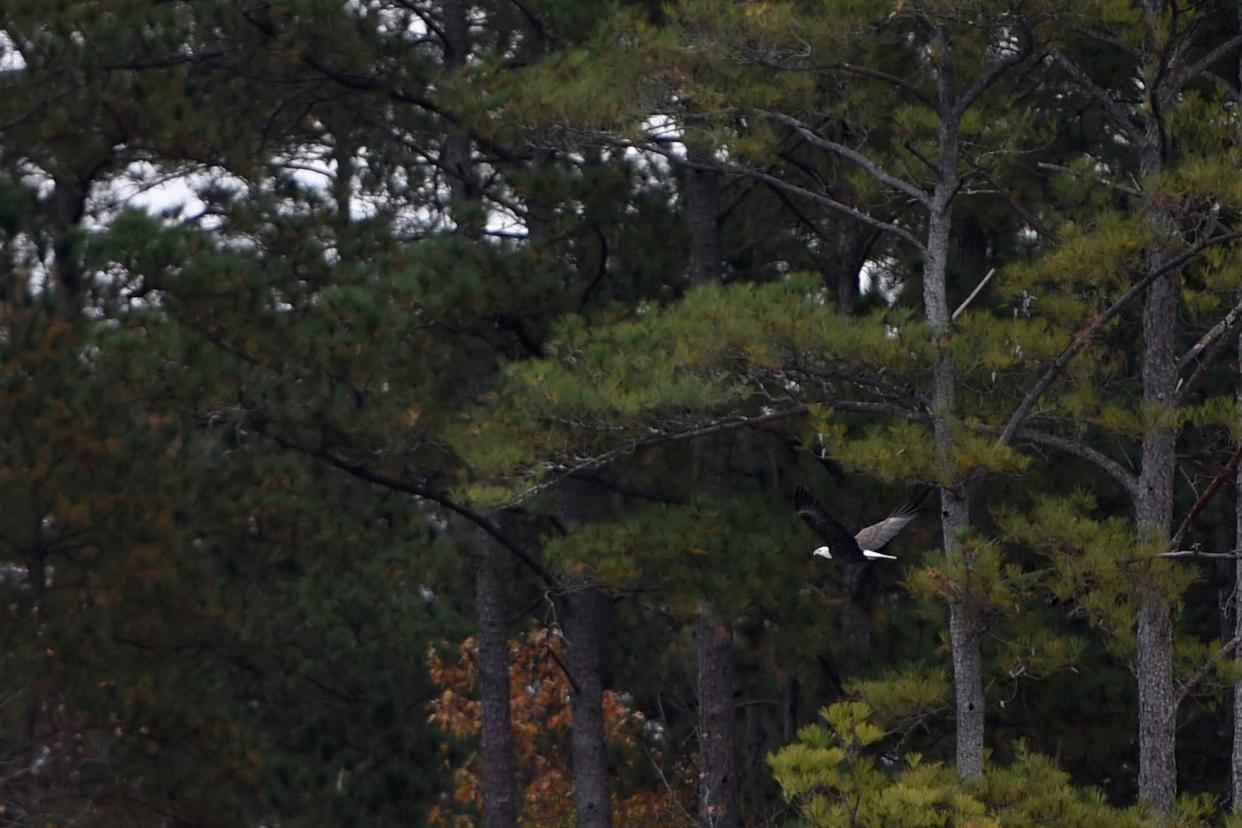Campbell Vaughn: Learn why the founding fathers made bald eagles our national emblem

- Oops!Something went wrong.Please try again later.
What a great week to be an American. We fought for independence from those oppressive British and turned this new the land into the greatest civilization in the history of the world. In 1776, Betsy Ross designed the stars and striped flag that we wave in honor of our country. Francis Scott Key composed the Star Spangled-Banner during the War of 1812 that we sing to honor our country. And on June 20, 1782, the Bald Eagle became the U.S. National Emblem.
“America” is what my son and I always yell when we see a bald eagle soaring at the family cabin at the lake. I love seeing bald eagles. The white heads, white tails and yellow beaks are a dead giveaway.
The bald eagle’s role as a national symbol is linked to its 1782 landing on the Great Seal of the United States. Shortly after the Declaration of Independence was signed on July 4, 1776, the Continental Congress gave Benjamin Franklin, Thomas Jefferson and John Adams the job of designing an official seal for the new nation. And Ben Franklin adamantly opposed the bald eagle and instead wanted the turkey to don our nations seal. Mr. Franklin said “the turkey is in comparison a much more respectable bird (than the bald eagle), and withal a true original native of America.” Come on, Ben. I love turkeys, but really? And then the bald eagle won out (as my son and I yell ‘America’).

Why are they called bald when they clearly have feathers on their heads? At a time in history, the word bald meant “white”, not hairless. This white head and tail don’t happen right away. Until the bird reaches sexual maturity at age 5, the bald eagle goes from blackish brown with a dark beak and feet to mottle to finally its gorgeous white head, white tail, yellow beak and yellow feet. These majestic animals can live longer than 30 years, but the average lifespan is 15 to 20 years.
Bald eagles are large birds weighing between 10 and 16 pounds. Their wing span can reach 90 inches. They can also lift as much as 4 pounds. Bald eagles are found throughout most of North America, from Alaska and Canada to northern Mexico. About half of the world's 70,000 bald eagles live in Alaska. Combined with British Columbia's population of about 20,000, the northwest coast of North America is by far their greatest stronghold for bald eagles. They flourish there in part because of the salmon. Dead or dying fish are an important food source for all bald eagles. When not in the Northwest, you can find bald eagles living along the coast and on major lakes and rivers.
Campbell Vaughn: Fungal issues on plants will be a problem in this current weather
Campbell Vaughn: Its aroma and toughness make rosemary a great addition to any landscape
The eye of the eagle is almost as large as a human’s eye, but it is at least four times as sharp. Bald eagles do not sweat so they rely on shade, panting and holding their wings away from their body as a cooling method. On the opposite side, the bald eagle’s tolerance of cold is outstanding. Our nation’s bird’s skin is protected by feathers lined with down while their feet consist mainly of tendons which keeps them cold resistant.
After many years on the endangered list, the U.S. Department of Interior took the American bald eagle off the Federal List of Endangered and Threatened Species list on June 28, 2007. Bald eagles will still be protected Under the Bald and Golden Eagle Protection Act. The number of nesting pairs in the lower 48 United States increased tenfold, from less than 450 in the early 1960s, to more than 4,500 adult bald eagle nesting pairs in the 1990s. In the Southeast, for example, there were about 980 breeding pairs in 1993, up from about 400 in 1981. The largest concentrations were in the states of Florida and Louisiana.
If you see a middle-aged man and a 14-year-old out on the lake yelling ‘America’ at the sky, look up and you might get a glimpse of our nation’s bird.
This article originally appeared on Augusta Chronicle: Learn some facts about bald eagles, our national emblem

